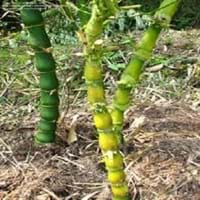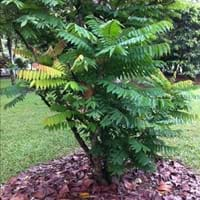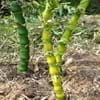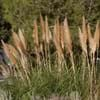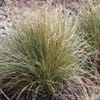Life Span
Perennial
Perennial
Type
Grass
Flowering Plants, Herbs
Origin
China, Japan
Hybrid origin
Types
Slender Weavers Bamboo, Golden Buddha's Belly Bamboo, Painted Bamboo
Not Available
Number of Varieties
Not Available
Habitat
Subtropical climates, Subtropical forests
moist forests, Mountains
USDA Hardiness Zone
9-11
4-9
Sunset Zone
H1, 18, 19, 20, 21, 22, 23, 24
1a, 1b, 2a, 2b, 3a, 3b, 4, 5, 6, 7, 8, 9, 10, 11, 12, 13, 14, 15, 16, 17, 18, 19, 20
Habit
Clump-Forming
Clump-Forming
Flower Color
Red
Purple, Pink, Lavender
Flower Color Modifier
Bicolor
Bicolor
Leaf Color in Spring
Dark Green
Green
Leaf Color in Summer
Light Green
Green
Leaf Color in Fall
Dark Green
Green
Leaf Color in Winter
Dark Green
Green
Leaf Shape
Linear
Pinnate
Plant Season
Spring, Summer, Fall, Winter
Spring, Summer
Sunlight
Full Sun, Partial Sun, Partial shade
Full Sun
Type of Soil
Clay, Loam, Sand
Clay, Loam, Sand
The pH of Soil
Acidic, Neutral, Alkaline
Acidic, Neutral, Alkaline
Soil Drainage
Average
Well drained
Bloom Time
Not Available
Late Spring, Summer
Tolerances
Not Available
Drought, Salt
Where to Plant?
Container, Ground
Ground
How to Plant?
Divison
Cuttings, Seedlings
Plant Maintenance
Medium
Medium
Watering Requirements
Allow to dry out slightly between watering, Needs 2-3 times watering per week, Requires watering in the growing season, Water Deeply, Water when soil is dry
Needs very little water
In Summer
Lots of watering
Lots of watering
In Spring
Moderate
Moderate
In Winter
Less Watering
Average Water
Soil pH
Acidic, Neutral, Alkaline
Acidic, Neutral, Alkaline
Soil Type
Clay, Loam, Sand
Clay, Loam, Sand
Soil Drainage Capacity
Average
Well drained
Sun Exposure
Full Sun, Partial Sun, Partial shade
Full Sun
Pruning
Cut the culms, Remove damaged leaves, Remove dead branches, Remove dead leaves, Remove dead or diseased plant parts
cut main trunk every 5 years, Prune after flowering, Prune central stem, Remove damaged leaves, Remove dead branches, Remove dead leaves
Fertilizers
All-Purpose Liquid Fertilizer, fertilize in growing season
All-Purpose Liquid Fertilizer, Apply 5-10-5 amounts, Compost
Pests and Diseases
Red blotch
Nematodes, Red blotch, Trunk Rot
Plant Tolerance
Not Available
Drought
Flower Petal Number
Single
Single
Foliage Texture
Medium
Medium
Foliage Sheen
Matte
Glossy
Attracts
Butterflies, Mites
Butterflies, Leaf Hoppers
Allergy
Pollen, Rash
Itchiness, Not Available, Sore Throat
Aesthetic Uses
Bonsai
Beautification
Beauty Benefits
Good for skin and hair, Not Available
Anti-ageing, Good Cleanser, Remove blemishes, Removes pimples
Environmental Uses
Air purification
Air purification, Food for animals, Food for birds, soil stabilisation
Medicinal Uses
Healthy teeth, Pain in gums
Cough, Haemorrhages, Laxative, Obesity, Tonic
Part of Plant Used
Sap, Stem
Fruits, Leaves
Other Uses
Container, Espalier, Screen, Used in paper industry
Added to salads, Can be boiled and seasoned, pickled, Culinary use
Used As Indoor Plant
Insignificant
No
Used As Outdoor Plant
Yes
Yes
Garden Design
Container, Feature Plant, Screening / Wind Break, Topiary / Bonsai / Espalier, Tropical
Container, Cutflower, Mixed Border, Rock Garden / Wall, Wildflower
Botanical Name
BAMBUSA ventricosa
Averrhoa bilimbi
Common Name
Buddha's Belly Bamboo, Clumping Bamboo, Ventricose Bamboo
Bilimbi, Mimbro
In Hindi
बुद्ध के पेट बांस
Bilimbi
In German
Buddhas Bauch Bambus
bilimbi
In French
Le Bamboo Belly de Bouddha
bilimbi
In Spanish
De bambú del vientre de Buda
bilimbi
In Greek
Κοιλιά Μπαμπού Βούδα
bilimbi
In Portuguese
Bamboo barriga de Buda
bilimbi
In Polish
Buddy Belly Bamboo
bilimbi
In Latin
Buddha ventre Bamboo
Rondo Beardtongue
Phylum
Magnoliophyta
Magnoliophyta
Class
Liliopsida
Magnoliopsida
Family
Poaceae
Oxalidaceae
Clade
Angiosperms, Commelinids, Monocots
Angiosperms, Eudicots, Rosids
Tribe
Bambuseae
Not Available
Subfamily
Bambusoideae
Not Available
Number of Species
Not Available
Season and Care of Buddha's Belly Bamboo and Bilimbi
Season and care of Buddha's Belly Bamboo and Bilimbi is important to know. While considering everything about Buddha's Belly Bamboo and Bilimbi Care, growing season is an essential factor. Buddha's Belly Bamboo season is Spring, Summer, Fall and Winter and Bilimbi season is Spring, Summer, Fall and Winter. The type of soil for Buddha's Belly Bamboo is Clay, Loam, Sand and for Bilimbi is Clay, Loam, Sand while the PH of soil for Buddha's Belly Bamboo is Acidic, Neutral, Alkaline and for Bilimbi is Acidic, Neutral, Alkaline.
Buddha's Belly Bamboo and Bilimbi Physical Information
Buddha's Belly Bamboo and Bilimbi physical information is very important for comparison. Buddha's Belly Bamboo height is 152.40 cm and width 5.50 cm whereas Bilimbi height is 38.10 cm and width 25.40 cm. The color specification of Buddha's Belly Bamboo and Bilimbi are as follows:
Buddha's Belly Bamboo flower color: Red
Buddha's Belly Bamboo leaf color: Dark Green
Bilimbi flower color: Purple, Pink and Lavender
- Bilimbi leaf color: Green
Care of Buddha's Belly Bamboo and Bilimbi
Care of Buddha's Belly Bamboo and Bilimbi include pruning, fertilizers, watering etc. Buddha's Belly Bamboo pruning is done Cut the culms, Remove damaged leaves, Remove dead branches, Remove dead leaves and Remove dead or diseased plant parts and Bilimbi pruning is done cut main trunk every 5 years, Prune after flowering, Prune central stem, Remove damaged leaves, Remove dead branches and Remove dead leaves. In summer Buddha's Belly Bamboo needs Lots of watering and in winter, it needs Less Watering. Whereas, in summer Bilimbi needs Lots of watering and in winter, it needs Average Water.
